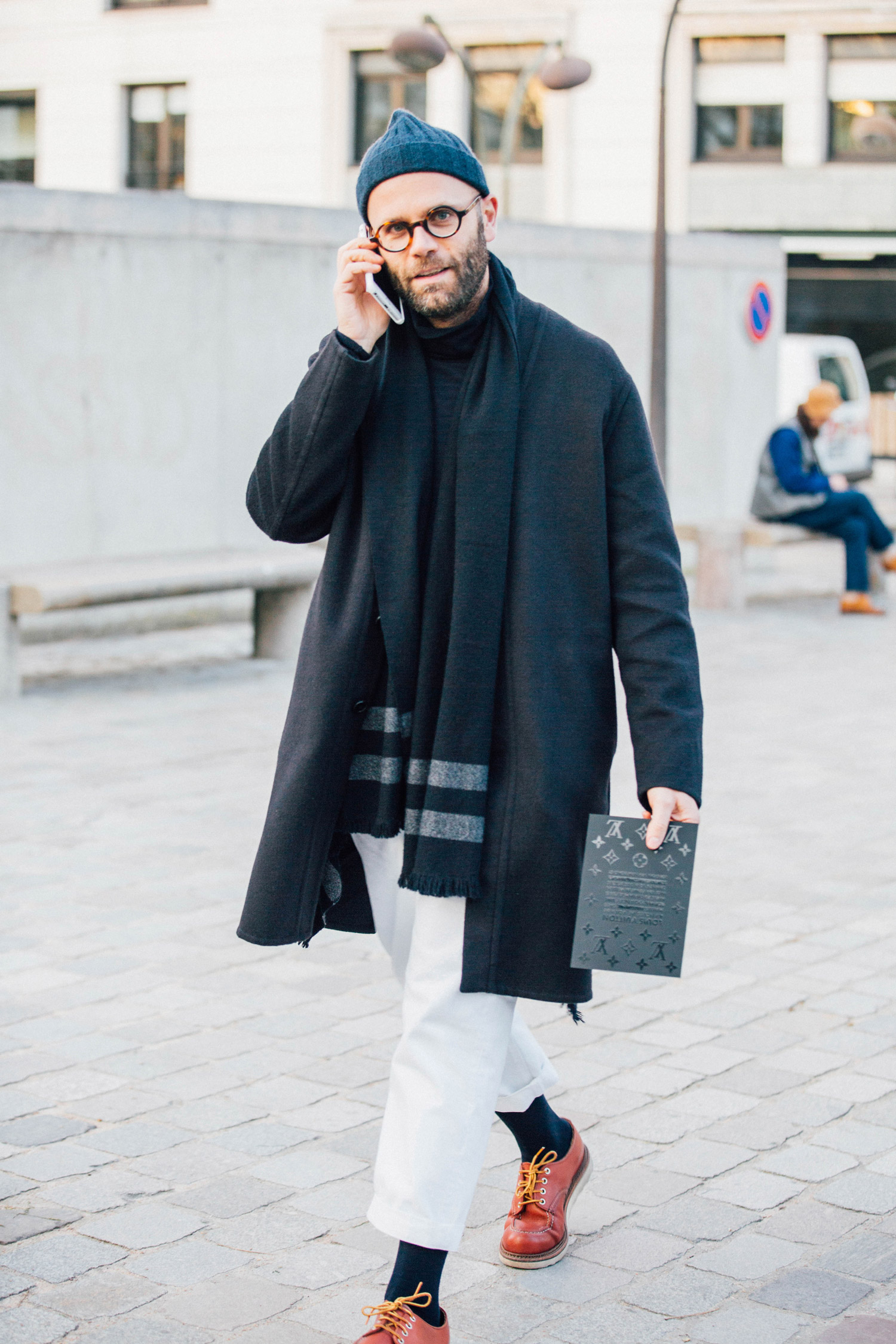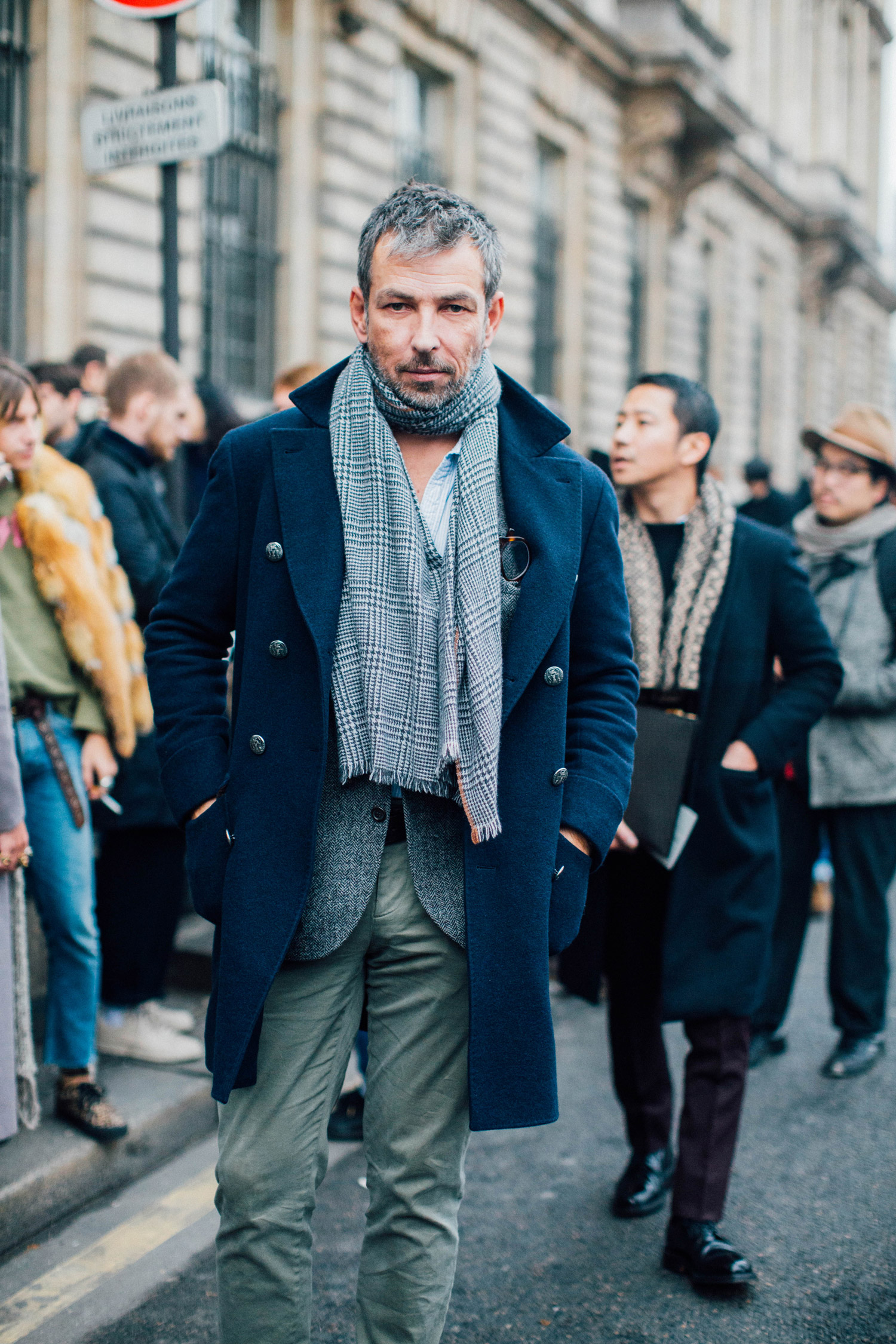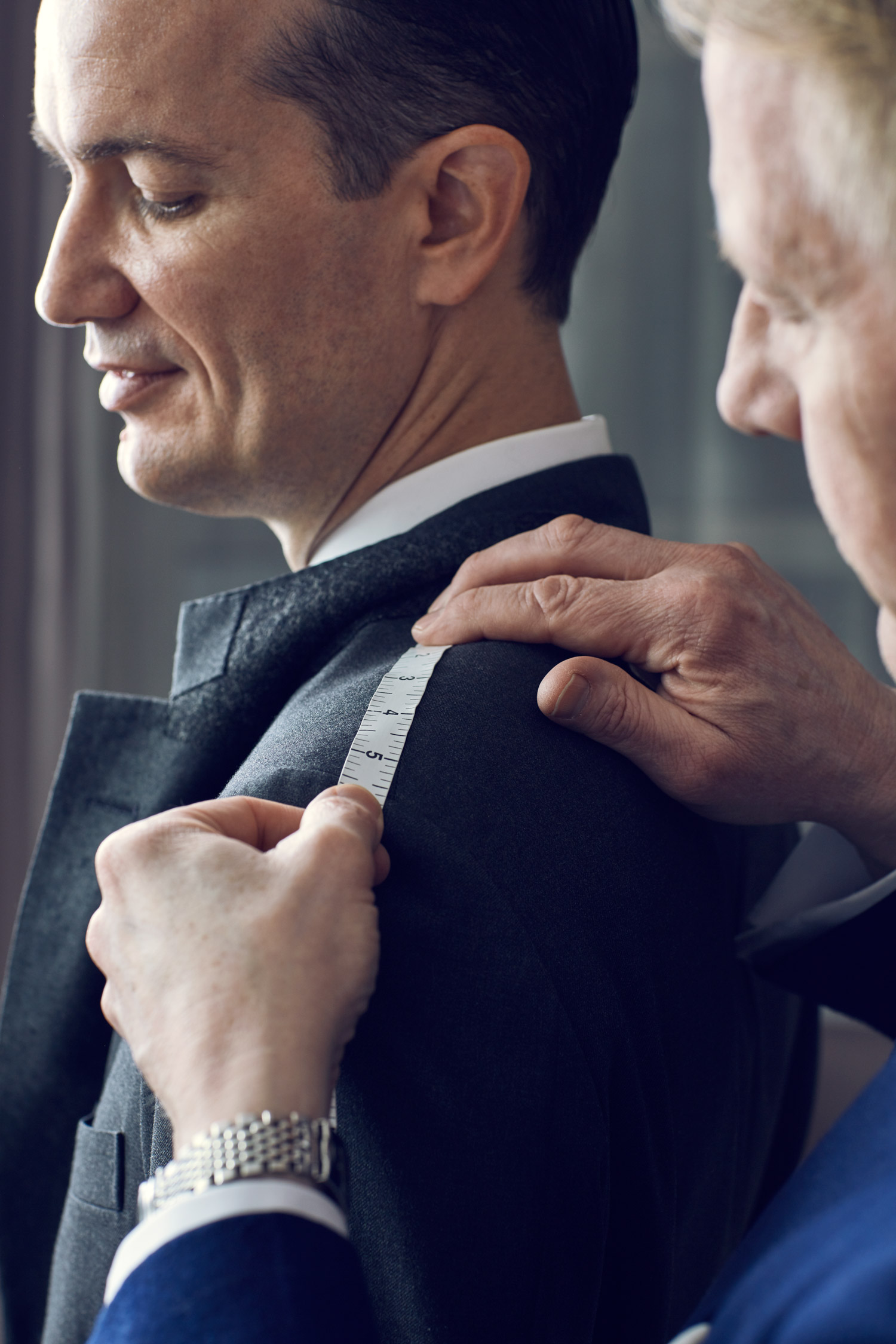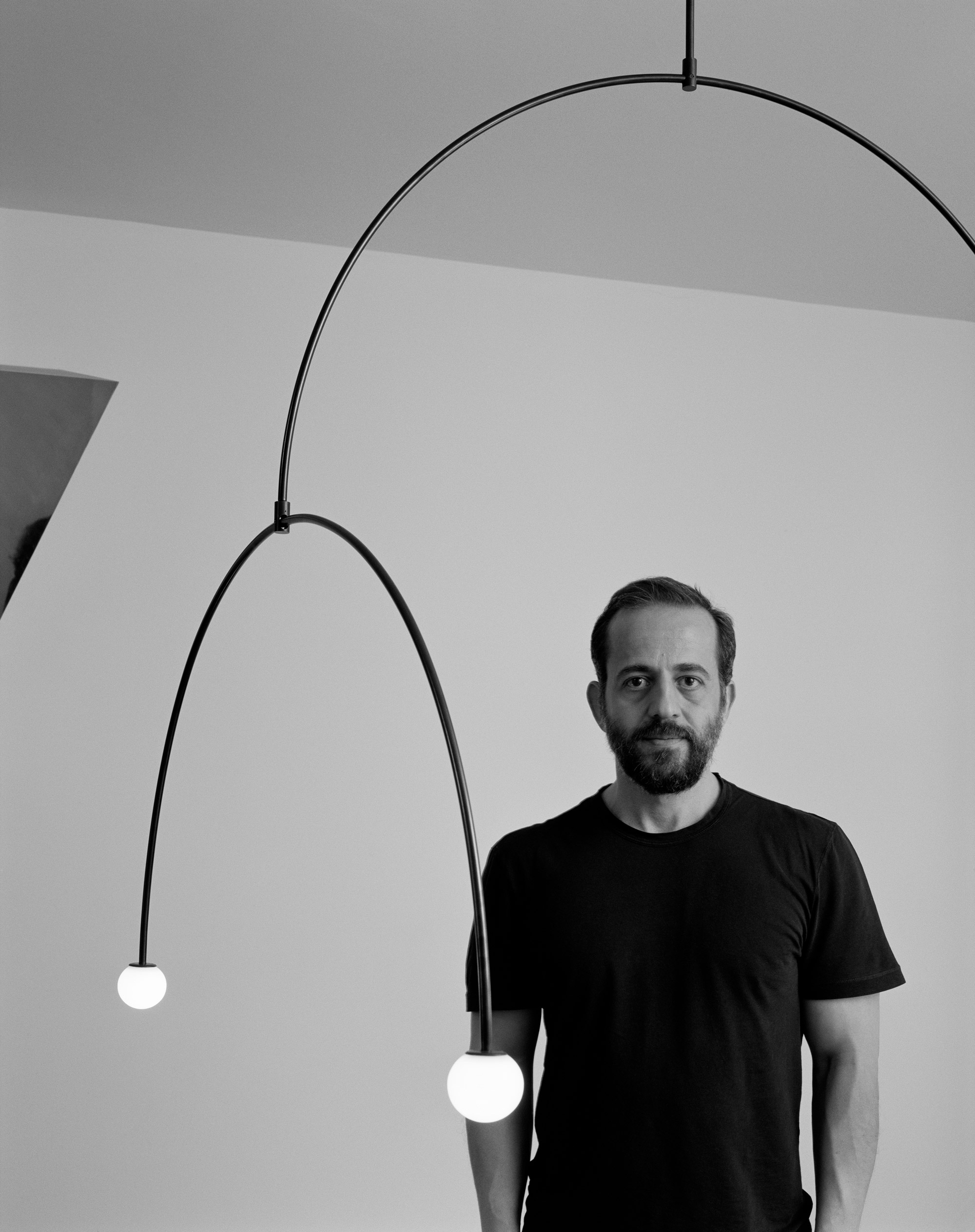
The creative director and brand consultant is living proof that the suit is a must-have for any self-respecting Rude Boy
HARRIS ELLIOT
The most important thing to remember when wearing formalwear is to wear the suit and not let the suit wear you. It has to look believable and feel natural. Adapt the suit to fit your character, personality and your way of life. This way you will become less conscious that you are wearing a suit. The suit will eternally be relevant, a well-fitting suit allows you to maintain great composure. If it’s teamed with a great pair of shoes the whole ensemble will encourage you to walk tall. There is a huge resurgence in sportswear with loose silhouettes in the market, and a good suit allows you to stand out from your peers. In order to make sure the traditions are maintained I think Savile Row should offer more apprenticeships. This approach will give young people an opportunity to learn about the art of tailoring.

The former style director at Men’s Health is now heading up Mr Porter in New York, adjusting his classic Savile Row style to Manhattan’s casual dress code
DAN ROOKWOOD
My suits keep me honest. I had several suits made for me when I was in peak physical condition in my early 30s and if I try on one of those suits and it feels a little tight, I know I need go for a few long runs. For me, a suit has a positive psychological effect as well as a sartorial one. It makes me stand that bit straighter. I feel more confident and in command when I’m wearing a suit – If I need to up my game, I put one on. As a garment, the suit is absolutely relevant today. It’s worn in different ways: five years ago, everything was very buttoned up, younger guys were getting into tailoring in a big way with all the trimmings: pocket squares, tie slides, statement socks. Half a decade on, the style is a bit more relaxed — certainly in New York anyway. These days I often wear a suit with sneakers and T-shirt or a collarless shirt.

As the designer of an exclusive Nordstrom capsule collection, Tank’s fashion director is redefining power dressing
CAROLINE ISSA
I love a beautifully cut suit. A great double-breasted trouser suit with feminine touches in the blouse — truly one of my all time favourite outfits — makes me feel put-together with very little effort, super chic and, well, like ‘The Business’. And that’s not too bad! I think the suit is even more relevant now than ever before, as customers look to invest in quality pieces, and suits are a staple wardrobe piece that you can dress up and down — they are incredibly versatile and of great value in my book. As we get more and more crunched for time, and more and more bombarded with information and product and collections, the suit is the most effective go-to garment. But I think it’s important that women’s suiting isn’t necessarily just ‘re-fit’ from men’s blocks but, rather, designed from zero and re-proportioned completely.

The Italian fashion critic and acclaimed Business of Fashion writer decodes the 21st century suit
ANGELO FLACCAVENTO
As the masculine social uniform par excellence, the suit has been relevant across the last two centuries. Despite the ongoing informalisation, it offers an unremitting, understated answer to the basic need of representing oneself decently in society. The suit is a shield and a projection: It makes you respectable and authoritative. A suit is reassuring, too: for men in fear of being perceived as frivolous, it says ‘I do care, but up to a certain point’. I think, that in order to keep up with our techno times, a suit does not need to incorporate technology as a gimmick. It should just be as light and performance-led as possible — wrinkle-free, stainrepelling, breathable — without loosing the outer aplomb. I like wearing it because it is a uniform, and as such my interlocutors are not distracted by what I wear. They focus on what I say.

The Canadian designer is known for two things: his stylish Larose Paris hat brand and appearing in endless street style shots by Tommy Ton
ISAAC LAROSE
The suit is a part of society’s dress code, but wearing one is still a statement. I don’t think it’s a necessity anymore, especially in the creative field, but the fact that it’s not an obligation makes it charming again to wear one. I think that’s why I love wearing one from time to time. The suit has looked pretty much the same for the past hundred years or so. I think it’s time to modernise it with the idea of a comfortable commute in mind. When you don’t work in a space where suits are part of the dress code I think the relationship with the suit becomes different. It becomes an outfit you wear for special occasions. I always loved the idea of dressing up for special events; it’s a ritual that put emphasis on the rarity of the moment. The beauty of it is that you can then wear a suit on ‘normal’ days and you will automatically feel more special!

Having spent over a decade in New York, the British fashion director of Esquire US has developed a trans-Atlantic point of view on suits
NICK SULLIVAN
The rules have changed and men now wear suits because they want to. It’s a pleasure and it’s a choice. But men also expect clothes to work for them, because of the lives they now live. I don’t think the relationship between the tailor and the customer has changed, it’s just that what the customer is looking for is changing slightly. When I moved from London to New York 12 years ago, I was like a poster child for Savile Row, but gradually the climate of New York had its effect on me, so now I mix up formalwear with more casual stuff. We are starting to go back to something more measured and calm. Still beautifully made, beautifully tailored, but not all bells and whistles: no yellow shoes and three hats. I think that we have got to a point when the focus is going to be on a really good cut and on a really good cloth — the way it should be!



